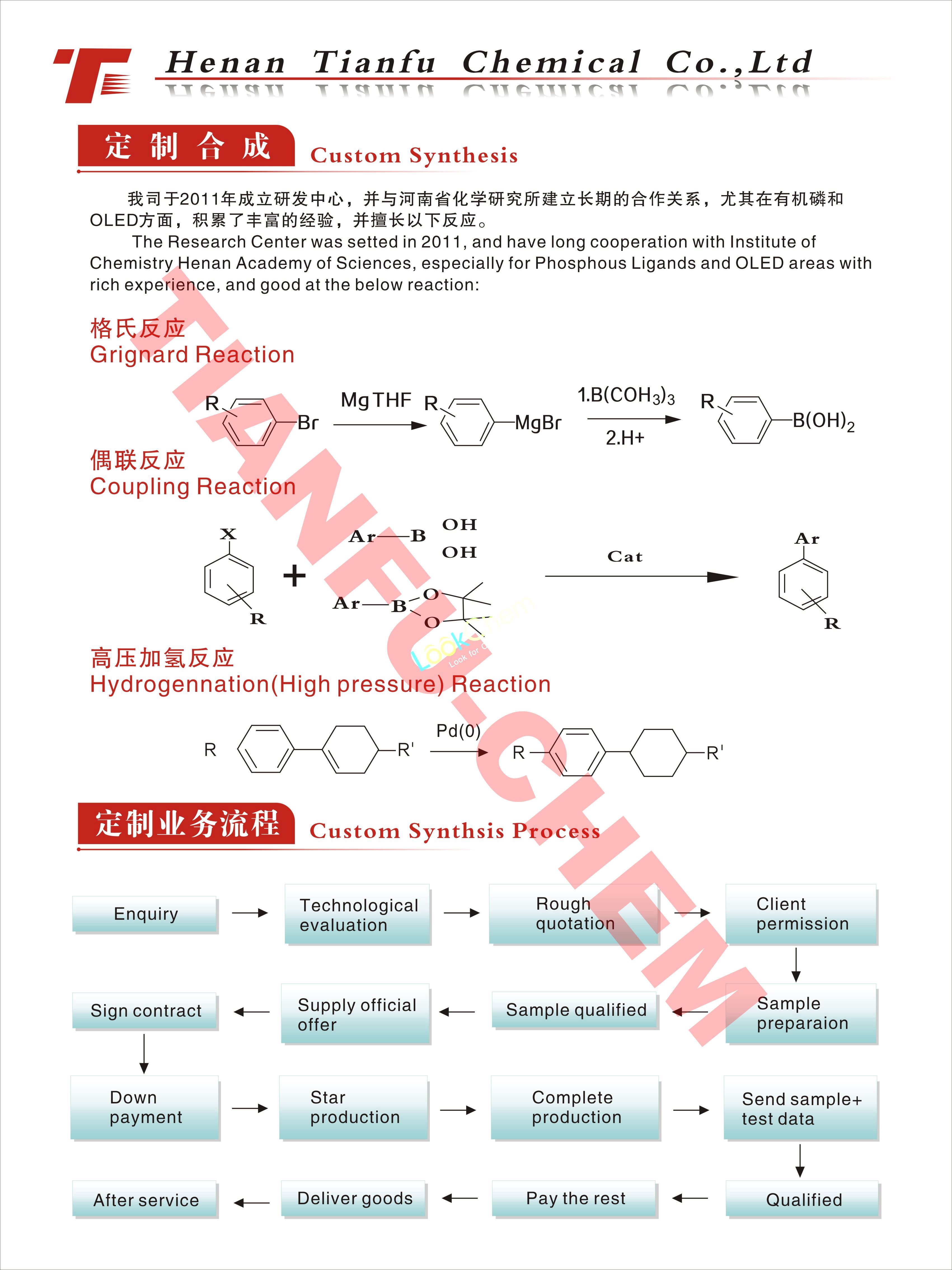BORON ALLYLOXIDE Basic information
Product Name: BORON ALLYLOXIDE
Synonyms: BORON ALLYLOXIDE;TRIALLYL BORATE;boricacid(h3bo3),tri-2-propenylester;triallyl;Allyl borate.;Boric acid=triallyl ester;tri(prop-2-enoxy)borane;triallyloxyborane
CAS: 1693-71-6
MF: C9H15BO3
MW: 182.02
EINECS: 216-897-9
Product Categories:
Mol File: 1693-71-6.mol
BORON ALLYLOXIDE Structure
BORON ALLYLOXIDE Chemical Properties
Boiling point 72°C 12mm
density 0,919 g/cm3
refractive index 1.4270
Fp 31°C
Safety Information
Risk Statements 10-36/37/38
Safety Statements 26-36/37/39
RIDADR 1993
TSCA No
HazardClass 6.1(b)
PackingGroup III
MSDS Information
BORON ALLYLOXIDE Usage And Synthesis
General Description BORON ALLYLOXIDE is a colorless liquid. BORON ALLYLOXIDE is insoluble in water and weigh, less than water. Contact with the material may cause mild irritation to skin, eyes, and mucous membranes. BORON ALLYLOXIDE may be slightly toxic by ingestion. BORON ALLYLOXIDE is used to make other chemicals.
Air & Water Reactions Insoluble in water.
Reactivity Profile Borates, such as BORON ALLYLOXIDE, behave similarly to esters in that they react with acids to liberate heat along with alcohols and acids. Strong oxidizing acids may cause a vigorous reaction that is sufficiently exothermic to ignite the reaction products. Heat is also generated by the interaction of esters with caustic solutions. Flammable hydrogen is generated by mixing esters/borates with alkali metals and hydrides.
Health Hazard TOXIC; inhalation, ingestion or contact (skin, eyes) with vapors, dusts or substance may cause severe injury, burns or death. Contact with molten substance may cause severe burns to skin and eyes. Reaction with water or moist air will release toxic, corrosive or flammable gases. Reaction with water may generate much heat that will increase the concentration of fumes in the air. Fire will produce irritating, corrosive and/or toxic gases. Runoff from fire control or dilution water may be corrosive and/or toxic and cause pollution.
Fire Hazard Combustible material: may burn but does not ignite readily. Substance will react with water (some violently) releasing flammable, toxic or corrosive gases and runoff. When heated, vapors may form explosive mixtures with air: indoors, outdoors and sewers explosion hazards. Most vapors are heavier than air. They will spread along ground and collect in low or confined areas (sewers, basements, tanks). Vapors may travel to source of ignition and flash back. Contact with metals may evolve flammable hydrogen gas. Containers may explode when heated or if contaminated with water.







 Assessedsupplier
Assessedsupplier


